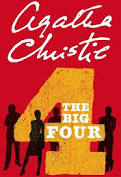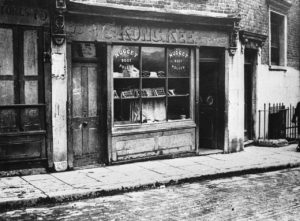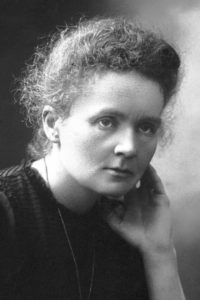
Poirot Score: 50
The Big Four
☆☆
Reasons for the Poirot Score
The Big Four is an interesting thriller with its groundbreaking female scientist leader out for world domination. It feels like an Ian Fleming Bond plot, minus the booze and the sex, rather than a Christie, but predates Casino Royale by 26 years!
Perhaps it is impossible to judge this early book fairly, because over the next fifty years the character of Poirot became so set as an armchair detective. Reading about Poirot leaping from trains, or climbing down drainpipes and ivy seems too improbable for a modern reader. One is affected by Hasting’s grief at the news that Poirot has been killed.
The Big Four has a high body count, with seven murders. The ability of No 4 to be the best hit man ever, is never explained. Nor, come to that, how four people on their own could really subjugate the whole world.
The plot is rather absurd, but an enjoyable read nevertheless.
Click here for full review (spoilers ahead)
Trivia
The Big Four
The Big Four in history refers to the four Allied leaders who met at the Paris Peace Conference in January 1919 following the end of World War I (1914–18). The Big Four are also known as the Council of Four. It was composed of Woodrow Wilson of the United States, David Lloyd George of Britain, Vittorio Orlando of Italy, and Georges Clemenceau of France. Agatha Christie would have been familiar with this usage, as she was writing this book 7 years later.
Limehouse, London’s Chinatown

A district in the London Borough of Tower Hamlets. It is on the northern bank of the River Thames, where Hastings was threatened with a watery death. In the 1920s London’s Chinatown was in Pennyfields, in the Limehouse district (see picture). Agatha Christie knew her London. She chose this area as the hideout head quarters for Li Chang Yen’s men. They would not have been conspicuous. In other areas of London a century ago, ‘foreigners’ would certainly have been viewed with suspicion. London is now one of the most cosmopolitan cities of the world. In the 1920s Limehouse was a poor, slum area. Today, it is up market, its Georgian houses by the Thames go for many millions of pounds!
Foreigners:
There are many characters referred to as ‘foreigners’. Hastings has trouble with the Chinese: ‘Not that I had ever succeeded in being able to distinguish one Chinaman from another’. However one ‘foreigner’ also remarks on how difficult England can be:
Only in England is the coffee so atrocious’ Poirot remarks ‘On the Continent they understand how important it is.
The Character of Captain Hastings:
When this book opens Hastings has been married to Cinderella for 18 months. Their home is a ranch in ‘the Argentine’. Hastings leaves his wife for a whole year, not the six months originally agreed, in order to be with Poirot. Despite this, Hastings still values Cinderella’s safety above that of Poirot, his best friend. Hastings rates his own life at nothing and indeed displays immense personal courage in the face of what he thinks is his own imminent demise. He is the epitome of an English gentleman: and Poirot salutes him for it.
The Characters of Hercule and Achille Poirot: Identical Twins?
Hercule Poirot :
Do you not know that all celebrated detectives have brothers who would be even more celebrated than they are were it not for constitutional indolence?
This is a direct acknowledgement of Sherlock and Mycroft Holmes, although Sherlock and Mycroft are brothers, not identical twins. One feels it is the playful nature of Christie’s creativity, making a salute to Sir Arthur Conan Doyle.
Sentier Agatha Christie in the Dolomites

The setting for the final dramatic dénouement in the Big Four is the Dolomites. Agatha Christie stayed at the Hotel Carezza (pictured), presumably where Poirot and Hastings stay. It has a spectacular location in the middle of a pinewood, in the Northern Italian Dolomites. The labyrinth of huge limestone blocks is a stroll up from the Hotel, and is now called the ‘Sentier Agatha Christie’. The whole area is well described in the book.
Mrs Halliday and Agatha Christie
An interesting character is Mrs Halliday, abandoned by her husband, with ‘her little girl, a beautiful child of five.’ Could this be Mrs Christie herself? Rosalind would have been a beautiful child of five to six years of age, as her mother was writing this book in 1925-6. It makes the words Mrs Halliday says to Poirot more poignant:
They are all convinced that my husband has gone off with some other woman. But he wasn’t like that! All he thought of in life was his work. Half our quarrels came from that. He cared for it more than he did for me.
Englishmen are like that,’ said Poirot soothingly.’ And if it is not work, it is the games, the sport. All those things they take au grand serieux.
Archie, Agatha Christie’s first husband, was having Golfing weekends with Nancy Neele during 1926. The marital crisis came to a head in August when Archie asked Agatha for a divorce. In this book, Mr Halliday comes back to his wife after several months away, Archie never did.
Marie Curie ( 7 November 1867 – 4 July 1934)

Marie Curie was still alive and living in Passy, France in 1926 when this novel was published. Clearly Madame Olivier is based on her. The fictional Madame Oliver lives in Passy and is working on ‘Radium C’. Marie and Pierre Curie had discovered Radium in 1898. Pierre Curie was killed in a road traffic accident in 1906, three years after he and Marie had shared the Nobel Prize. Madame Olivier’s husband had been killed in a laboratory explosion.
Marie Curie spent her life devoted to research. She died of the long term effects of radium poisoning, which of course, were unknown at the time. Marie Curie’s papers remain radioactive, and even her cookbook is still kept in a lead-lined box.
It is highly unusual for any female character in the 1920s to be a “Mastermind” or leader. There were no female leaders in the world. Although married women aged over 30 years had the vote in the UK in 1918, women over the age of 21 did not get the vote until 1928, the year after this book was published.
It is a sign of Christie’s groundbreaking feminism that she chose a female criminal mastermind for world domination.

